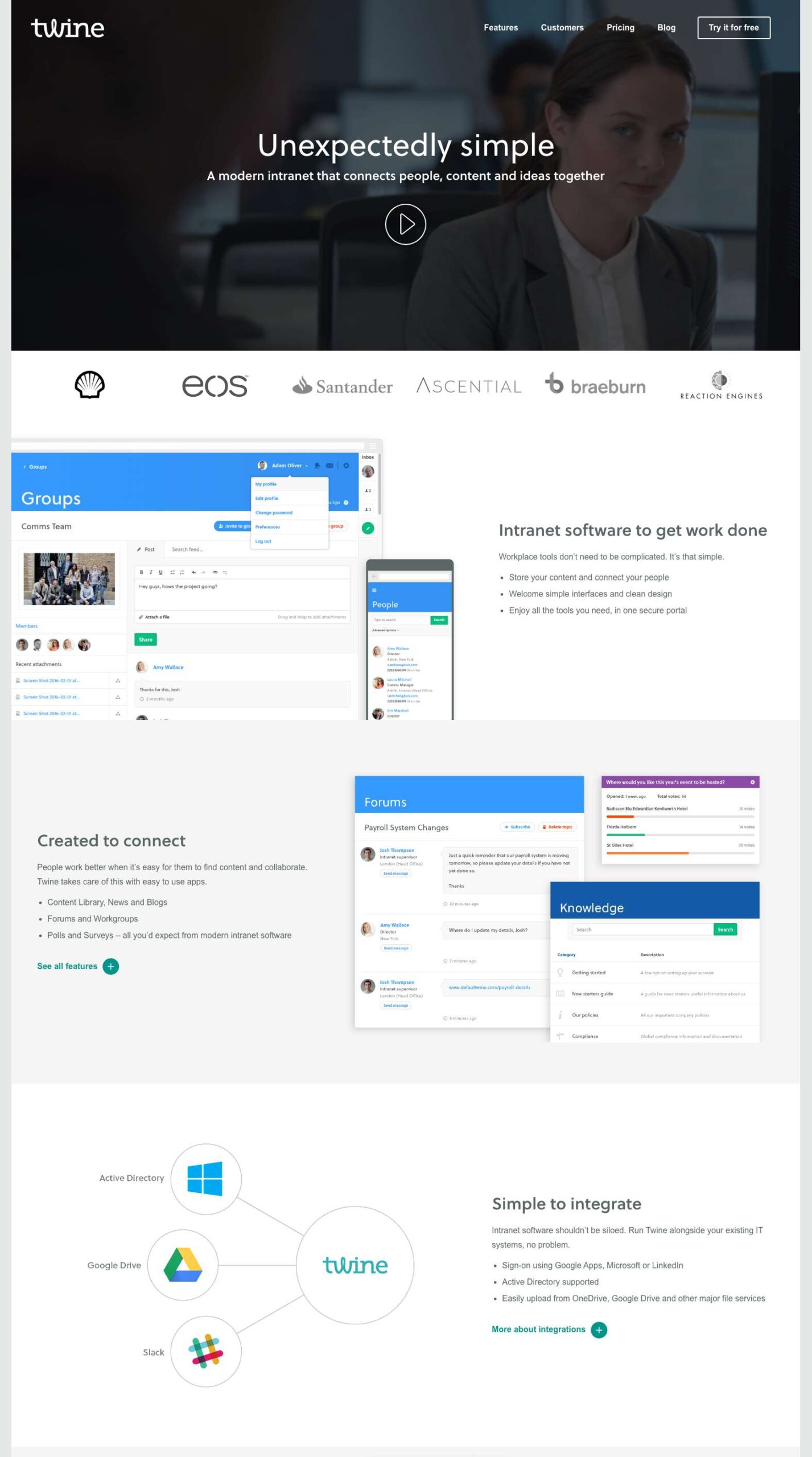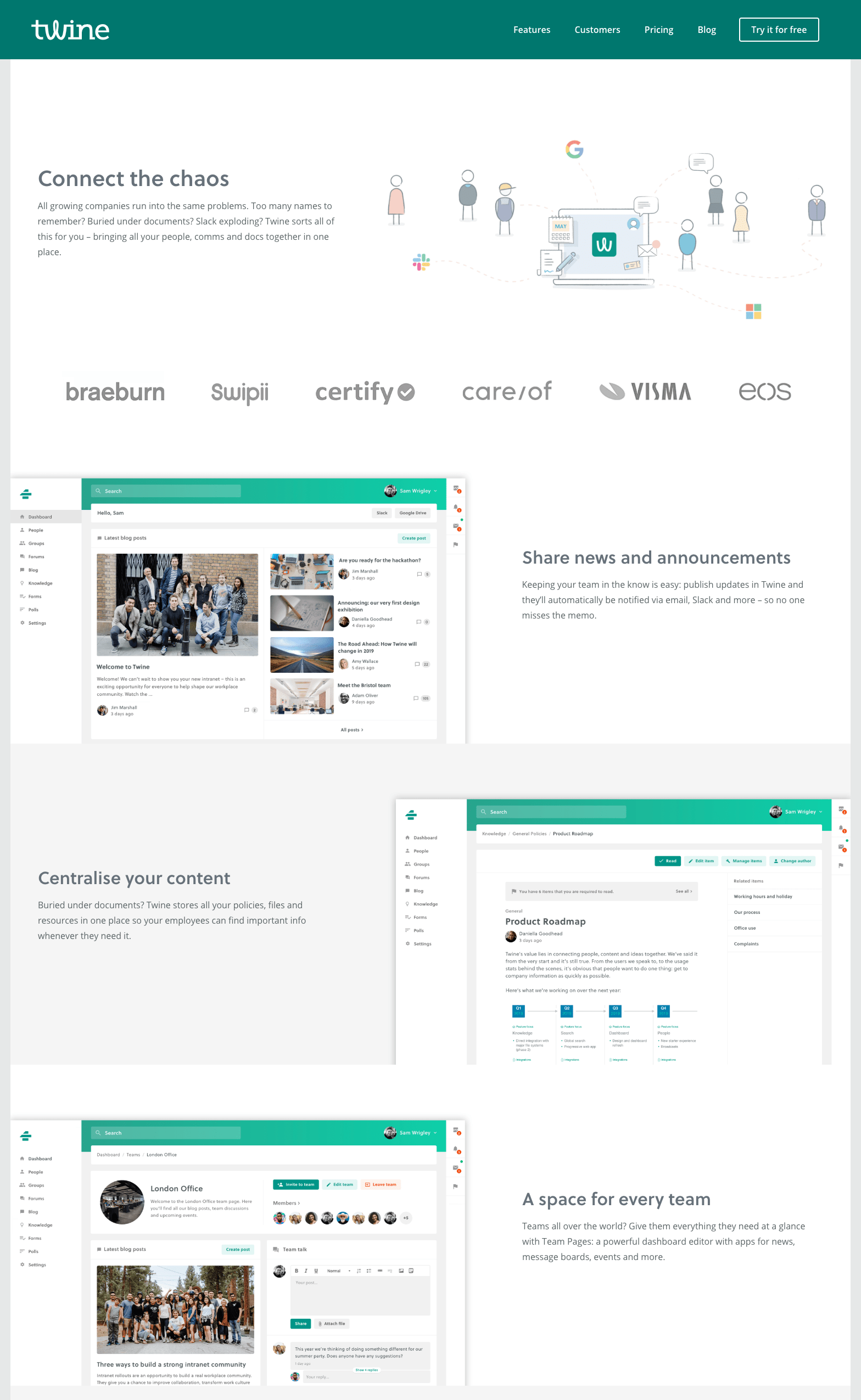Applying the Jobs to be Done framework to our SaaS platform

Talking to users is one of the most important things you can do in business. But, not a lot of people do it. And those who do, often ask the wrong questions.
I’ve been there. We’ve been working on Twine, our SaaS knowledge platform, since 2016. Over those years, we’ve spoken to tons of our users.
Every time we signed off a new client I’d think to myself: ‘we’re on to something here.’ Every time we lost a potential client to a competitor, I thought to myself: ‘why?’ We’ve built everything potential customers have asked for, why aren’t we killing it every single time?
It didn’t seem to matter how witty my copywriting was, we weren’t getting any closer to our dream of hockey stick growth. That all started to change when we discovered the power of milkshakes. You read that right: milkshakes.
How to sell milkshakes
Our ‘aha’ moment came when we watched a video by Clayton Christensen. The short YouTube clip (below) talks about how something called the ‘Jobs to be Done’ (JTBD) framework was used to innovate within the milkshake market.
Here’s a summary of the video.
Traditional thought in business is that the best product in a marketplace wins out. If you’re in the milkshake business and you want to sell more units, you may well – logically – work towards making your milkshakes tastier. You’d probably even aim to make your product the tastiest milkshake on the market. The problem is that, in the real world, once companies have done this, they tend to see sales improve a bit, but not a lot.
To try and find out why this was happening, Christensen walked up to people who had just bought a milkshake and asked: ‘what job are you hiring this milkshake to do?’ They answered that they needed something to fill them up during their commute. They’d tried a banana once, but it didn’t keep them full. They’d also tried doughnuts, but found them to be too messy.
Suddenly, Christensen realised his milkshakes were in a different, much bigger market.
Milkshakes aren’t just competing with other milkshakes, they’re competing with bananas, doughnuts, bagels and more; in fact, anything that can be hired for to complete the job of ‘fill me up on my commute’.
You can apply this thought process to all kinds of industries.
Reed Hastings, CEO of Netflix, sums it up nicely:
‘Sometimes employees at Netflix think, ‘Oh my god, we’re competing with FX, HBO, or Amazon, but think about if you didn’t watch Netflix last night: What did you do? There’s such a broad range of things that you did to relax and unwind, hang out, and connect–and we compete with all of that.’
Every customer has a Job to be Done
Every purchase is the result of a Job to be Done process. When we buy a product, we ‘hire’ it to help us do a job. If it does the job well, we’ll hire that product again. If it doesn’t do the job well, we’ll fire it. Simple.
Now for the tricky part; finding your customer’s Job to be Done. To do that, you’ll need to interview your customers, but beware, JTBD interviews can take a bit of practice to get right. When you do, though, it’ll completely change the way you think about your business.
Jason Fried, CEO of Basecamp, agrees, saying that:
‘For eight years we’ve been talking about Basecamp as a project management tool. What was interesting to me was that very few customers that we talked to really talked about project management. They didn’t use that term or really even think of it in that way. That was eye-opening to me.’
The reason JTBD interviews are so powerful is that they uncover the events that pushed someone into making their purchasing decision. This requires a very specific interview technique that, at times, feels more like an interrogation than an interview.
Here’s an example interview from Jobs to be Done pioneer, Bob Moesta.
Applying Jobs to be Done to SaaS
Twine is a small company with big dreams. We’re inspired by some of our favourite SaaS companies who have applied JTBD to their business, like Basecamp and Intercom. But, both of these companies hired consultants to run their JTBD research. As a small company, we simply didn’t have the resources to do that.

Luckily, with proper technique, it doesn’t take a huge number of JTBD interviews to get quality feedback. At Twine, we interviewed a selected handful of our most engaged power users and we saw huge results.
You can see the impact of this research clearly on our marketing site. Originally, back before we applied the JTBD thought process to our product, we believed we were selling intranet software. Here’s what our homepage looked like prior to our Jobs to be Done research.

But, after getting on the phone and questioning our customers deeply, we identified new and novel jobs that our software was completing for customers that we hadn’t even considered when developing our marketing site. That led us to completely change the way we speak about Twine; we no longer use the term ‘intranet’, but instead concentrate on the jobs that it does for our customers. We talk about connecting, integrating, centralising and sharing. We talk about the problems that fast-growing companies encounter, and how Twine helps our customers face these issues.
Here’s what our homepage looks like now.

We think this marks a big change for the company, and in the short time the changes have been live, we’ve seen an improvement in our on-site conversion stats. We plan to build on this success and double down on our product to make sure our users continue to hire Twine again and again.